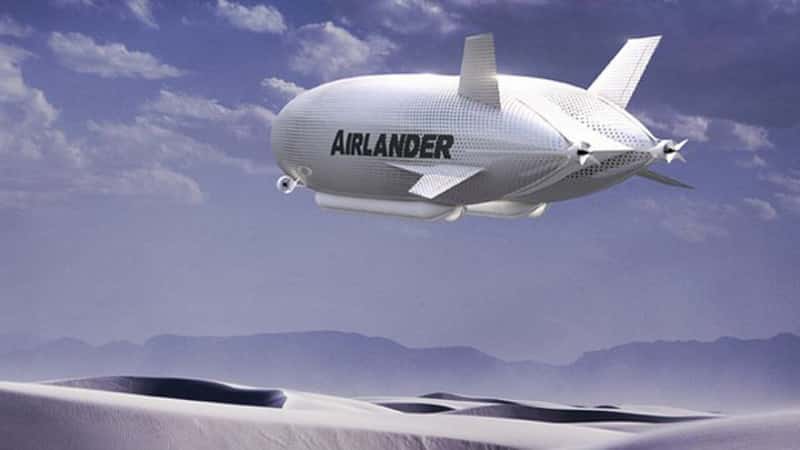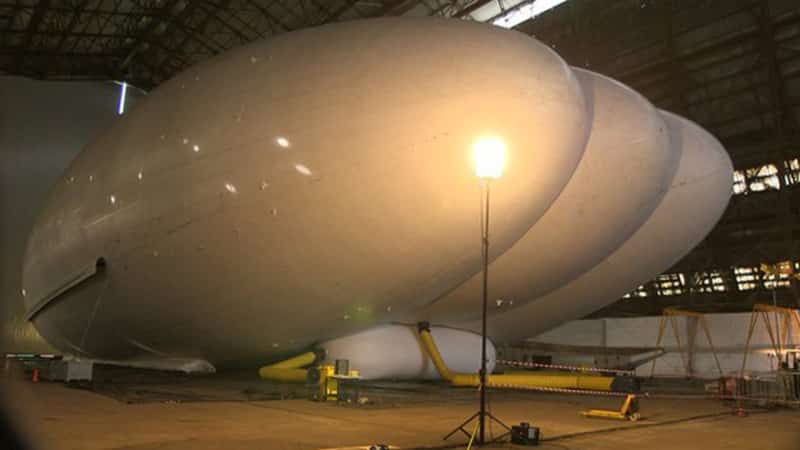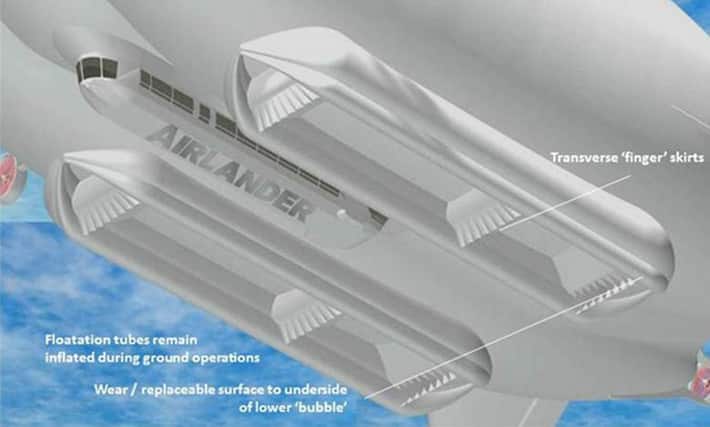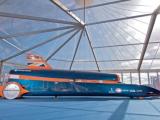British company Hybrid Air Vehicles (HAV) has unveiled the world’s longest aircraft named AIRLANDER at Cardington airfield in England. The aircraft may fly in early 2015.
The AIRLANDER is a hybrid air vehicle and derives its flight capability from a mix of aerodynamic lift and helium buoyancy. Its envelope is constructed from a laminated fabric that offers strength, a gas barrier and protection against the elements. It also has an internal catenary system supporting the payload module. The hull’s aerodynamic shape, an elliptical cross-section allied to a cambered longitudinal shape, provides roughly 40% of the vehicle’s lift. The internal diaphragms required to support this shape allow for some compartmentalization, further enhancing the fail-safe nature of the vehicle. Multiple air-filled ballonets are located at fore.
The Heavy Lift versions of the AIRLANDER uses an innovative landing system called the Air Cushion Landing System (ACLS). This enables the vehicle to land on almost any reasonably flat surface including land, water, ice and snow. The ACLS is also used, in conjunction with the bow thruster, to simplify manoeuvrability on the ground, reducing the need to operate the main propulsion units. The ACLS can also be used to create suction to ensure the AIRLANDER remains stationary during loading and off-loading.
The landing systems are deflated and ‘sucked-into’ the hull for a clean in-flight profile. The power units used for inflation / deflation are shared with the ballonet fans and managed by the hull pressurisation system. However, the entire features of AIRLANDER are as following:
- AIRLANDER is designed to be the safest form of air travel. The vehicle does not stall, lands on any reasonably flat surface and has a take-off and landing speed of around 40 knots. It is fitted with four propulsion units and with close on 10,000 Shaft horsepower (SHP) for the 50 tonne variant it has sufficient power and range to deal with the most challenging environments.
- It is a vehicle that uses a combination of buoyancy (helium gas) and aerodynamics (the shape of the body) to generate lift. This design creates the perfect balance between economic flight (typically associated with airships), operational flexibility (typically associated with helicopters), range and payload.
- The AIRLANDER range consists of two groups – Surveillance and Heavy Lift. The surveillance vehicle can operate at up to 16,000 feet, 5 days manned. The Heavy Lift version is designed for transportation of passengers and cargo.
- A key attribute is operational flexibility. In addition to Conventional Take-Off and Landing (CTOL), the vehicle is also capable of Vertical Take-Off and Landing (VTOL). It can, for example, hover like a helicopter while hoisting up to 40% of its designed payload 20 tons in the case of the AIRLANDER 50. The AIRLANDER 50 has a range of 2,600 nautical miles (4,815 kilometres).
- The AIRLANDER excels in operational efficiency. For example, the Heavy Lift version requires little or no infrastructure to operate. For CTOL, it requires no runway and less than four hull lengths to take off or land.
- The Air Cushion Landing System enables the vehicle to land on almost any reasonably flat surface, including land, water, ice and snow. Suction can also be used to ensure the vehicle remains stationary during loading and off-loading. This lack of reliance on infrastructure allows the vehicle to operate point-to-point (from source to site), offering major benefits in terms of time, risk reduction, operating costs and the environment.
The aircraft can carry a load of 2,700 lbs. for up to 21 days. On shorter flights, it could carry up to 5 tons. The bubbly ship has three rounded points in the front and propellers on each side. HAV intends to fly it in early 2015 with hopes of making it available for passenger and cargo flights.
Source: Hybrid Air Vehicles
[ttjad]





